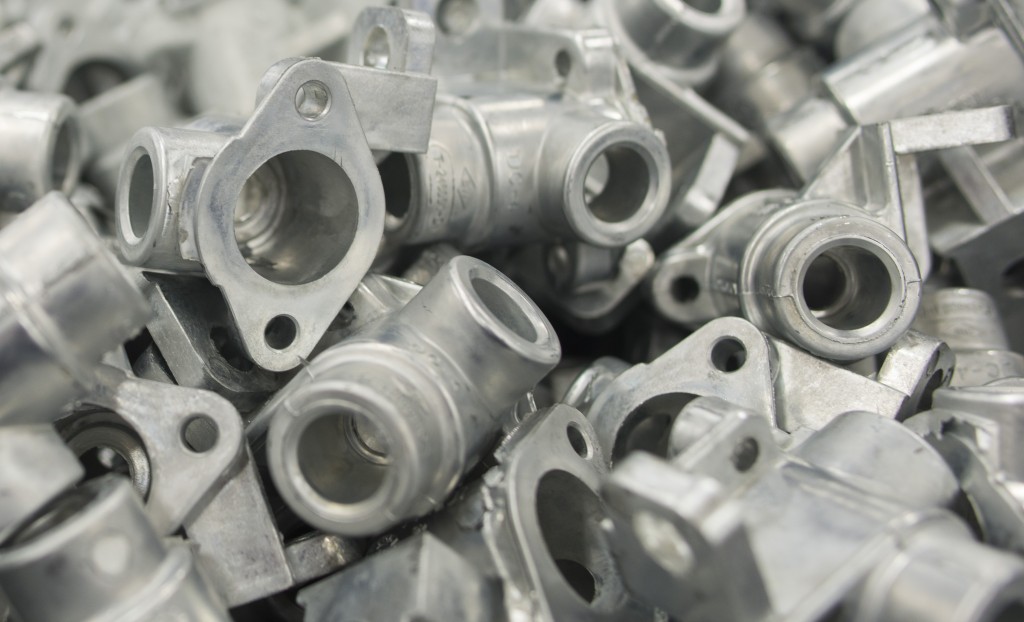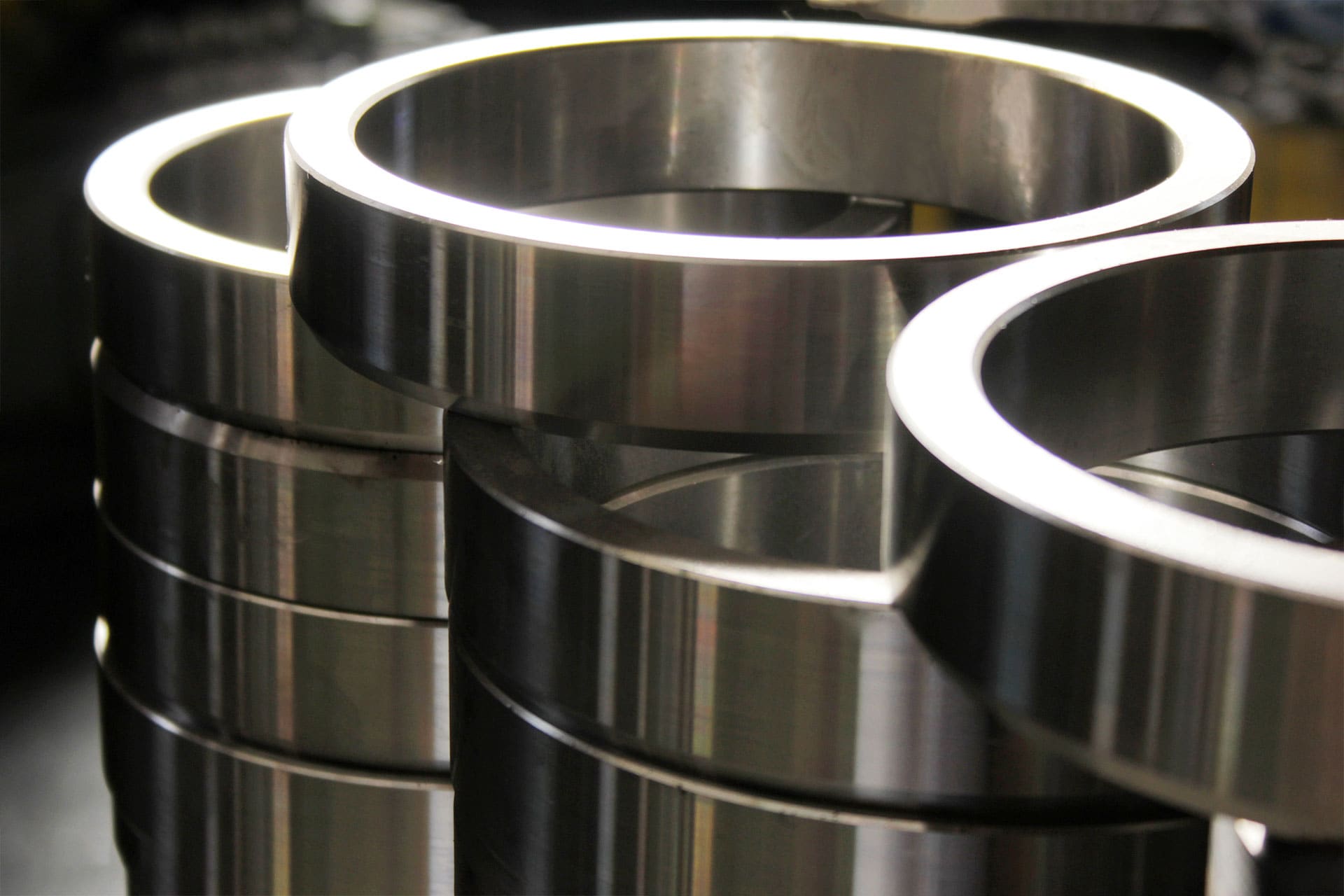Revealing the Advantages and Practical Use Aluminum Castings in Today's Market
Light weight aluminum castings have actually become progressively pertinent in different sectors because of their one-of-a-kind attributes. Their lightweight nature and resistance to rust make them ideal for demanding applications. Additionally, the premium strength-to-weight proportion uses significant advantages in layout and manufacturing. As markets continue to explore their possibility, the full range of light weight aluminum spreadings' applications and advantages continues to be to be fully discovered. What exists in advance for this functional product?
The Lightweight Advantage of Aluminum Castings
Although several materials are utilized in production, light weight aluminum spreadings stand out primarily due to their light-weight properties. This characteristic makes aluminum spreadings an appealing option for different sectors, specifically in aerospace and auto applications, where weight decrease is important for enhancing fuel effectiveness and performance. The lightweight nature of light weight aluminum allows suppliers to develop components that are much easier to set up and manage, eventually lowering labor prices.
The ability to generate complicated forms without substantial weight charges makes it possible for developers to innovate while maintaining architectural integrity. Light weight aluminum castings can properly replace heavier products, leading to considerable cost savings in shipping and functional prices. Their light-weight advantage also adds to improved item long life, as lighter elements typically result in lowered deterioration on machinery. Overall, the light-weight homes of light weight aluminum spreadings give makers with a competitive side, fostering improvements in product layout and effectiveness throughout different sectors.

Outstanding Rust Resistance
Light weight aluminum castings have an all-natural resistance to oxidation, which considerably enhances their longevity in numerous atmospheres. This fundamental residential or commercial property not just adds to their durability yet additionally aligns with the light-weight advantage that light weight aluminum uses. Because of this, light weight aluminum castings are increasingly acknowledged for their outstanding corrosion resistance in numerous applications.

Normally Immune to Oxidation
One of the standout characteristics of light weight aluminum castings is their outstanding rust resistance, which comes from a natural oxidation procedure. When subjected to air, light weight aluminum responds to develop a thin, safety layer of aluminum oxide. This layer serves as an obstacle against further oxidation and secures the underlying metal from harsh aspects such as moisture and salts. Unlike various other metals, this oxide layer is self-repairing; if harmed, it swiftly reforms when exposed to air. This one-of-a-kind home enhances the long life of aluminum spreadings in various environments, making them optimal for applications in sectors such as aerospace, auto, and marine. As a result, the natural resistance to oxidation greatly reduces maintenance prices and boosts the reliability of aluminum spreadings in demanding problems.
Light-weight Resilience Benefit
The lightweight nature of aluminum spreadings adds substantially to their sturdiness, making them a beneficial option in different markets. This exceptional toughness is greatly associated to light weight aluminum's inherent resistance to rust, which is enhanced further via anodizing and other surface therapies. Unlike several steels, aluminum does not corrosion; rather, it develops a protective oxide layer that shields it from environmental damages. This residential property is specifically valuable in markets such as auto and aerospace, where weight decrease is critical without compromising strength. In addition, the longevity of aluminum castings minimizes maintenance costs and replacements, offering economic benefits in time. Their lightweight resilience and corrosion resistance position aluminum castings as a premium product for contemporary manufacturing applications.

Superior Strength-to-Weight Proportion
A remarkable quality of aluminum castings is their exceptional strength-to-weight ratio, which makes them extremely desirable in different applications. This innate building permits light weight aluminum spreadings to stand up to significant anxiety while staying lightweight, a vital element in markets such as aerospace, auto, and production. Engineers commonly prefer light weight aluminum spreadings for components that call for both resilience and reduced weight, enhancing gas performance and performance.
The high strength-to-weight proportion likewise assists in the style of intricate forms and frameworks, making aluminum spreadings versatile for facility applications. The capability to keep structural honesty under difficult conditions warranties durability and reliability in items, from aircraft structures to automobile parts. This benefit adds to the expanding trend of making use of aluminum castings in innovative layouts, ultimately bring about enhanced capability and efficiency throughout diverse markets. The remarkable strength-to-weight ratio of aluminum spreadings positions them as a critical product in modern engineering and production.
Cost-Effectiveness in Production
Cost-effectiveness in aluminum spreading manufacturing is mainly achieved through minimized product waste and efficient manufacturing processes. By maximizing styles and using innovative techniques, suppliers can lessen excess product usage while maintaining quality criteria. This technique not only reduces manufacturing expenses yet additionally adds to more sustainable methods within the sector.
Reduced Product Waste
Reducing material waste in aluminum spreading processes considerably improves manufacturing effectiveness. By maximizing the layout and production strategies, firms can decrease excess scrap and boost source application. This decrease in waste not just reduces product expenses however also adds to a much more sustainable production version. The capacity to reuse light weight aluminum additional assistances cost-effectiveness, permitting producers to redeem and recycle products without endangering top quality. As the market progressively concentrates on sustainability, reduced material waste aligns with environmental objectives while concurrently improving success. Inevitably, reliable usage of resources strengthens the affordable setting of companies out there, making aluminum spreadings a desirable choice in various applications. The critical technique to lessening waste reflects a dedication to both economic and ecological duty.
Reliable Manufacturing Processes
While standard production processes can incur considerable prices, light weight aluminum casting offers a more efficient option that boosts overall production success. This method lessens material waste and permits accurate control over the manufacturing process, bring about decreased labor and functional costs. The capability to generate complicated shapes with fewer actions further streamlines manufacturing, contributing to shorter preparations. Furthermore, light weight aluminum's lightweight nature and superb continue reading this thermal conductivity permit for power savings throughout manufacturing and in the last application. By utilizing modern spreading modern technologies, makers can accomplish greater throughput without sacrificing high quality. As a result, light weight aluminum casting sticks out as a cost-effective service, making it an eye-catching option for companies aiming to enhance their manufacturing procedures in today's open market.
Versatility Across Industries
Aluminum spreadings demonstrate exceptional adaptability throughout different sectors, as they can be customized to fulfill details needs and applications. In the auto field, light weight aluminum spreadings are utilized in engine blocks, transmission real estates, and wheels, offering lightweight yet durable remedies that enhance gas performance. The aerospace sector likewise benefits from light weight aluminum castings, utilizing them in architectural components and engine components due to their strength-to-weight ratio.
In the durable goods field, manufacturers use light weight aluminum castings for products varying from cooking equipment to furniture, offering both aesthetic charm and functionality. The electronic devices market uses aluminum castings for housings and warm sinks, ensuring effective thermal management. Furthermore, the construction sector leverages light weight aluminum spreadings for structural components and building components, boosting sturdiness and design adaptability. This wide applicability highlights aluminum castings as an important source, meeting the varied requirements of numerous markets while maintaining high efficiency and integrity.
Sustainability and Ecological Effect
As markets progressively prioritize lasting techniques, aluminum spreadings arise as a green selection because of their recyclability and reduced environmental impact. Light weight aluminum is one of the most recycled materials around the world, with the capacity to be repurposed numerous times without degradation of quality. This particular greatly lowers the demand for raw products and power consumption connected with primary light weight aluminum manufacturing, which is energy-intensive.
Furthermore, light weight aluminum spreadings add to lightweight styles, resulting in sustain effectiveness in transport applications such as aerospace and automobile industries. Their longevity and resistance to rust extend item life expectancies, further lessening waste and source usage over time. In addition, several manufacturers are adopting responsible sourcing and environmentally friendly production methods, boosting the sustainability of light weight aluminum spreading procedures. On the whole, aluminum spreadings represent a practical remedy for businesses intending to lower their environmental impact while accomplishing efficiency and efficiency.
Advancements in Light Weight Aluminum Spreading Technologies
Recent developments in light weight aluminum spreading innovations have greatly improved the effectiveness and high quality of production procedures. Advancements such as 3D printing and progressed mold-making methods have actually made it possible for makers to develop elaborate designs with decreased material waste. This change not just enhances the accuracy of cast components however additionally reduces lead times, permitting rapid prototyping and faster market access.
Moreover, the incorporation of sophisticated you could try this out computer system simulations help in predicting prospective defects during casting, resulting in higher-quality outcomes (Aluminum Castings). Making use of light-weight alloys has also contributed to the growth of stronger, a lot more durable products, dealing with markets ranging from automotive to aerospace
Furthermore, automated casting processes have emerged, lessening human error and boosting manufacturing rate. Collectively, these technologies are changing the aluminum casting landscape, driving greater competitiveness and sustainability in manufacturing. As industries proceed to progress, these innovations will play an important role in meeting future needs for efficiency and top quality.
Often Asked Inquiries
Just How Do Aluminum Castings Compare to Other Steels in Terms of Thermal Conductivity?
Aluminum spreadings exhibit premium thermal conductivity contrasted to many steels, such as steel and iron - Metal Castings. Their light-weight nature and efficient heat distribution make them excellent for applications calling for effective thermal management in different sectors
What Are the Common Problems Located in Light Weight Aluminum Castings?
Usual flaws in light weight aluminum spreadings include porosity, shrinkage, incorporations, and surface area irregularities. These concerns commonly develop from inappropriate air conditioning rates, poor mold and mildew layout, or contaminations, influencing the overall high quality and efficiency of the end product.
Can Light Weight Aluminum Castings Be Recycled, and How?
Aluminum castings can be reused efficiently. The procedure entails gathering, melting, and reforming the aluminum, which reduces waste and saves resources. This reusing adds to sustainability while keeping the product's residential properties for future usage.
What Are the Typical Lead Times for Light Weight Aluminum Casting Manufacturing?
Normally, preparations for light weight aluminum casting production array from two to 6 weeks, relying on elements such as complexity, tooling needs, and manufacturing volume. Performance can improve with well established supplier connections and optimized manufacturing procedures.
Just how Does the Surface Area Finish Affect Light Weight Aluminum Spreading Performance?
The surface coating significantly affects aluminum spreading performance by influencing corrosion Check This Out resistance, aesthetic high quality, and rubbing features. A smoother coating improves sturdiness and functionality, while a rougher structure can improve adhesion for subsequent finishes or treatments.
Lots of materials are made use of in production, light weight aluminum spreadings stand out primarily due to their lightweight residential properties. When subjected to air, aluminum responds to develop a thin, protective layer of aluminum oxide. Cost-effectiveness in light weight aluminum casting production is mainly accomplished with minimized material waste and effective production processes. Lowering product waste in light weight aluminum casting processes substantially improves production effectiveness. Inevitably, effective use of raw products reinforces the competitive setting of services in the market, making light weight aluminum castings a desirable option in numerous applications.